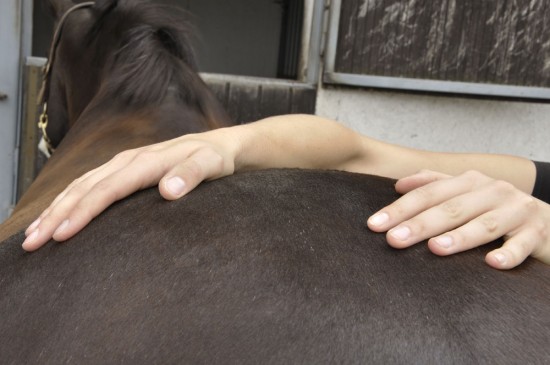Are white dogs deaf? Are dalmatians deaf and what is the cause of dalmatian deafness? Why did I end up with a deaf Boston terrier? What are the most common deaf dog breeds? These are the most popular questions that owners ask in regards to the causes of dog deafness. There four different types of genetic defects that affect deaf puppies.
The first gene error involves the piebald gene. This is a pigmentation gene, which determines the colour of the dog's coat. The increasing amount of white, in a dog's coat and head increases the likelihood of deafness. The piebald gene is common in the Bull Terrier, Boston Terrier, Samoyed, Greyhound, Great Pyrenees, Beagle, Bulldog, Jack Russel Terriers, Dalmatian and English Setter. It is still unclear how these genes are transmitted. As the Samoyed, an all white breed, does not present any problems with hereditary deafness.
Luckily, there are no links between piebald genetic deafness and other specific health problems (apart from the ones present in a particular breed) they are just healthy dogs who cannot hear.
The second occurrence of hereditary and congenital deafness involves the merle genes, in particular the homozygous merle gene. The merle or dappled gene creates light and dark areas of colour in the dog's coat. Trouble arises when two dogs with the merle coat gene are bred. In that case, there is a 25% chance that the offspring may inherit the homozygous merle gene. These homozygous merle pups are also called "double merle" or "lethal white" pups.
Double merle pups will have large amounts of white in their coats and some merle patches. In addition to being deaf, these pups may also be blind, partially blind, have severe organ problems, as well as allergy and skin problems. Some do not live long, hence the nickname "lethal white." Not all double merle pups have the full range of problems, as some may be deaf and suffer from allergies, or deaf with partial vision loss. In this case the double merle gene causes a wide range of health problems in addition to deafness. The breeds affected by the merle genes are: Collies, Shetland Sheepdogs, Harlequin Great Danes, Dappled Dachshund, American Foxhound and Old English Sheepdog.
A third occurrence of genetic deafness was discovered in Pointers. Although Pointers do carry a piebald gene, it is believed that a recessive gene is the cause of deafness and it is not linked to a predominantly white coat or head. This recessive gene causes only total deafness in pups, and no partial hearing loss with no further health problems. Breeds affected by this recessive gene are Pointers, Whippets and Rottweilers.
A fourth type of genetic deafness was discovered d in Doberman Pinschers. Dobermans and Shropshire Terriers do not carry the merle or piebald genes however the deafness is caused by a simple autosomal recessive gene and it is not linked to an excessive amount of white in the coat. Unfortunately these dogs also have balance problems and they may walk with their head tilted or in circles.
Since pups that are affected by the double merle gene have a wide range of health problems, there is a common belief that ALL deaf dogs have additional health problems. Dalmatians, deaf or not, may have problems specific to the breed, not because of the deafness. It's also widely believed that only white dogs can be born deaf and neither of these common beliefs are entirely accurate. It is important to know the different characteristics of each genetic error and the breeds that are affected by them. There is also a higher incidence of deafness in liver spotted Dalmatians and blue eyed Dalmatians.

 The All-important Temperament In Dogs
The All-important
The All-important Temperament In Dogs
The All-important
 Massage And Chiropractic Treatments For Horses
Massage And Chiro
Massage And Chiropractic Treatments For Horses
Massage And Chiro
 All about Goldendoodle Puppies for Sale
All about Goldendoodle Puppies for Sale
Any pu
All about Goldendoodle Puppies for Sale
All about Goldendoodle Puppies for Sale
Any pu
 Is Having Two Cats Together Better Than One?
Is Having Two Cat
Is Having Two Cats Together Better Than One?
Is Having Two Cat
 About The Redpolls
About The Redpoll
About The Redpolls
About The Redpoll